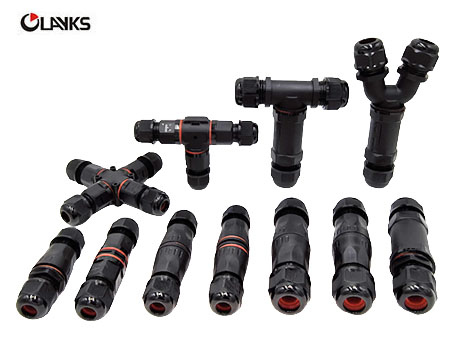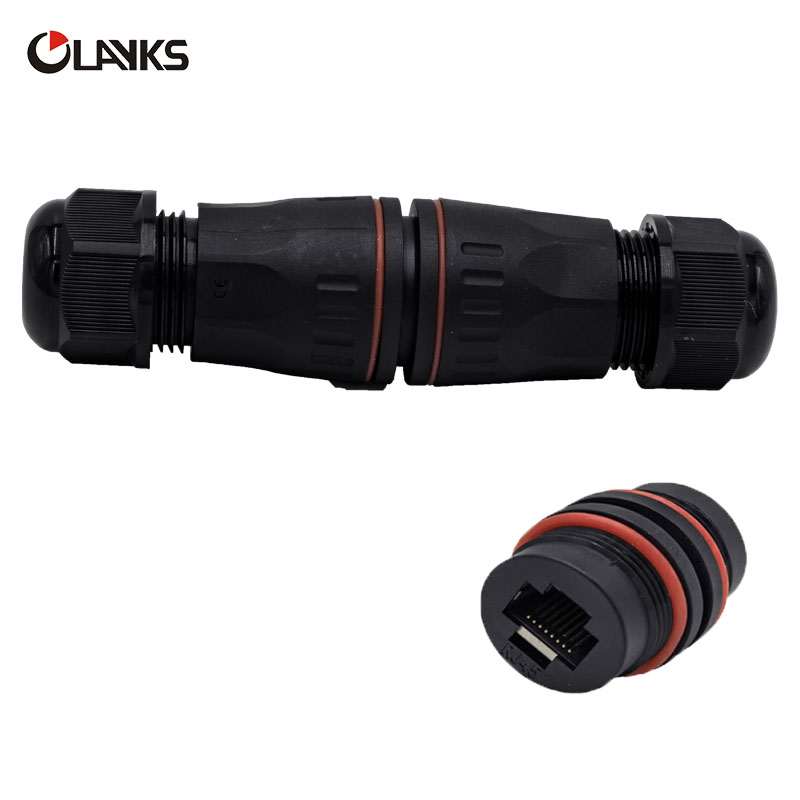What Are Waterproof Connectors?
Waterproof connectors are specialized electrical connectors designed to prevent water ingress and protect electrical connections from moisture, dust, and other environmental factors. These connectors are essential for maintaining reliable electrical connections in harsh or outdoor environments where standard connectors would fail.

Waterproof connectors ensure reliable performance even in challenging conditions
These connectors utilize various sealing mechanisms such as rubber gaskets, O-rings, potting compounds, and specialized designs that create a barrier against liquids. The level of protection is standardized through IP (Ingress Protection) ratings, with higher numbers indicating better protection.
Key Features & Benefits
Waterproof connectors offer several advantages over standard connectors, making them indispensable in many applications:
-
Environmental Protection: Shield connections from water, moisture, dust, and chemicals
-
Corrosion Resistance: Made with materials that resist corrosion in harsh environments
-
Durability: Designed to withstand vibration, impact, and extreme temperatures
-
Safety: Prevent short circuits and electrical failures caused by moisture
-
Longevity: Extend the life of electrical systems by protecting connection points

Precision engineering ensures complete protection from environmental factors
Types of Waterproof Connectors
Waterproof connectors come in various types, each designed for specific applications and environments:
| Type | Description | IP Rating | Common Applications |
|---|---|---|---|
| Cable-to-Cable | Connect two cables together securely | IP67-IP69K | Outdoor lighting, marine applications |
| Panel Mount | Installed through equipment enclosures | IP68-IP69K | Industrial machinery, automotive |
| Inline | Connect cables in a straight line | IP67-IP68 | Audio equipment, sensors |
| Circular Connectors | Multi-pin circular design | IP67-IP69K | Military, aerospace, data transmission |
| Rectangular | Multi-pin rectangular design | IP65-IP68 | Industrial automation, control systems |

Various waterproof connector types for different applications
Selection Criteria
Choosing the right waterproof connector requires careful consideration of several factors:
-
IP Rating: Match the IP rating to your environmental conditions (e.g., IP67 for temporary immersion, IP68 for prolonged immersion)
-
Current Rating: Ensure the connector can handle the required electrical current
-
Voltage Rating: Select a connector rated for your voltage requirements
-
Temperature Range: Consider the operating temperature range of your application
-
Chemical Resistance: For environments with exposure to chemicals or oils
-
Mating Cycles: Number of connect/disconnect cycles the connector can endure
-
Connector Size: Physical dimensions and weight constraints
-
Certifications: Industry-specific certifications may be required (UL, CSA, etc.)
Pro Tip: Always choose a connector with a higher IP rating than you think you need. Environmental conditions can be more extreme than anticipated, and the extra protection provides a safety margin.
Installation Guide
Proper installation is critical to maintaining the waterproof integrity of connectors. Follow these steps for a successful installation:
Step 1: Preparation
Gather all necessary tools: wire strippers, crimping tool, heat gun (if using heat shrink), and appropriate seals. Ensure the working area is clean and dry.
Step 2: Cable Preparation
Strip the cable jacket to the recommended length. Avoid nicking conductor strands. For multi-conductor cables, strip individual wires as needed.
Step 3: Contact Assembly
Properly crimp contacts to conductors using the recommended tooling. Verify crimp quality by performing a pull test on sample connections.
Step 4: Sealing
Install all necessary seals, O-rings, and gaskets. Ensure they are properly seated and free from debris that could compromise the seal.
Step 5: Connector Assembly
Insert contacts into the connector housing until they click into place. Assemble connector halves, tightening until secure but not over-tightened.
Step 6: Testing
Perform continuity tests to verify proper electrical connection. For critical applications, consider performing a water immersion test.

Proper installation technique ensures optimal performance and protection
Maintenance & Troubleshooting
Regular maintenance ensures long-term reliability of waterproof connectors:
-
Visual Inspection: Regularly check for cracks, corrosion, or damage to seals
-
Clean Connections: Keep connectors clean using appropriate cleaning solutions
-
Seal Replacement: Replace seals periodically as recommended by the manufacturer
-
Retightening: Check that connector halves remain properly secured
Common Issues and Solutions
| Problem | Possible Cause | Solution |
|---|---|---|
| Water Ingress | Damaged seal, improper installation | Replace seals, reinstall properly |
| Intermittent Connection | Corrosion, loose contacts | Clean contacts, ensure proper crimping |
| Difficulty Mating | Misalignment, damaged contacts | Check alignment, replace damaged parts |
| Overheating | Undersized connector, loose connection | Use properly rated connector, secure connections |
Applications
Waterproof connectors are essential components across numerous industries:
-
Marine: Boat electronics, navigation systems, underwater equipment
-
Automotive: Engine sensors, lighting, charging systems
-
Industrial: Factory automation, process control, outdoor machinery
-
Renewable Energy: Solar panel arrays, wind turbines
-
Telecommunications: Outdoor equipment, antenna connections
-
Medical: Equipment requiring sterilization or used in wet environments
-
Military/Aerospace: Severe environment applications

Waterproof connectors in an industrial automation setting
Remember: Always consult manufacturer specifications and industry standards when selecting and installing waterproof connectors for critical applications. Proper selection and installation ensure reliability, safety, and longevity of your electrical systems.




